These 5 Cars Lost the Most Value in the Beginning of 2024
Two weeks ago, we explored some bright spots in the collector car market following our recent update to the Hagerty Price Guide. We’re back this week to look at some of the cars that didn’t fare as well. Valuation changes continue to be subject to nuanced inputs rather than the more consistently broad market movement we observed two years ago. This selection of cars that saw notable downward movement is no different, but their value losses may portend wider market changes in the future. From the blue chip to the affordable, we’ll have our eyes out to see whether these trends take hold as we head into the driving season.
As always, if you have questions about how we arrived at these changes, you can read more about the methodology behind the Hagerty Price Guide here.
1970 Plymouth Superbird: -24%

They were cars that could have only existed in their particular eras, and would be deemed too crazy to build again (although Dodge has been known to build some pretty wild things). The MOPAR wing cars—the Dodge Daytona and Plymouth Superbird—sought to take the NASCAR rulebook to its limits, but would need to be sold to the public as well in order to compete. As with many other homologation specials, the changes made to these cars were purely intended for on-track dominance without regard to street use.
While Dodge would build just 505 Charger-based Daytonas in 1969 (500 being the minimum number for homologation), Plymouth would be far more successful, producing 1,935 Road Runner-based Superbirds the following year. The long and the aerodynamic nose offered poor spatial awareness for street driving, arguably making them a headache to live with day-to-day. Winding the clock forward, that didn’t matter a lick—the Daytona and Superbird are among the most recognizable cars of the Muscle Car era and sought-after centerpieces for serious collectors.
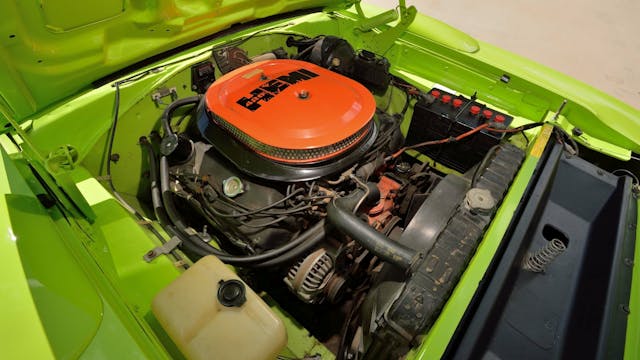

While these cars are usually offered in fits and spurts on the public market over the course of a given year, we witnessed over 20 offered in January alone. That’s a lot, in fact that is too many at one time. Yes, it is possible to have too much of a good thing, and when you are talking about the price point where the Superbird resides, it’s possible to have more cars than buyers. That usually equates to poor sales, and that’s exactly what happened. Both Hemi and 440-6 barrel cars sold for prices massively under market. That doesn’t mean that the floor has officially fallen out on these cars—further market observation, particularly of more typical individual sales spread out over time, needs to happen to confirm that—however, this is a good indication that the top tier of the muscle car market has begun to wane.
1967 Chevrolet Corvette L88: -19%
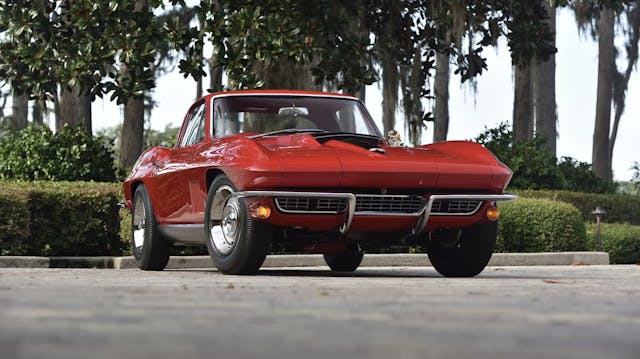
Let’s talk Blue Chip collector cars for a moment. These are the best of the best, the most exclusive collector cars in the hobby. Just having a pedigree in your brand isn’t enough—there has to be a sense of pomp and circumstance and genuflection when these cars come up in conversation. While the Chevrolet Corvette is not the first car that comes to mind when talking Blue Chip collectors, the L88-equipped 1967 ‘Vette is one of those cars.
Here’s a quick refresher on the L88 Corvettes for the two or three of you reading this who are unfamiliar with them. Chevrolet offered their biggest and baddest engine to exist in a Corvette to date in 1967. In the form of RPO code L88, a 427 cubic inch big block making a conservatively rated 430 horsepower (true figures are believed to be in excess of 500). The purpose of this engine was to put weapons-grade power in the hands of racers who could afford the nearly $950 option at that time. Out of the three years the L88 was an option, 1967 is the first, the rarest, and arguably the best-looking Corvette to have the option.
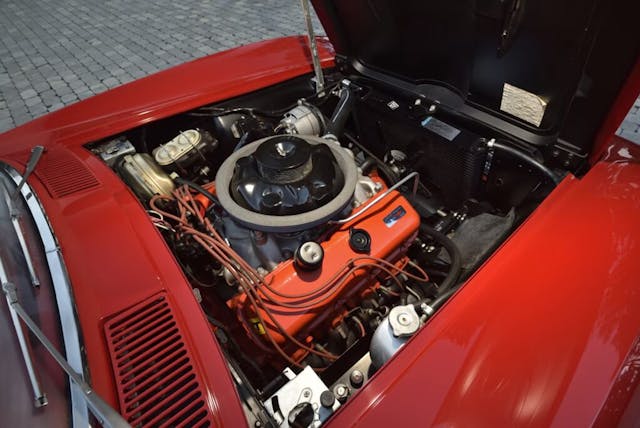
Since these cars are out of reach of the average collector—only 20 examples were produced, and costs are well into seven-figures—why do we care about their results? Even the top of the market has implications that trickle down to the more affordable segments of the hobby over time. After years of little activity and sitting high in the market, three examples hit the market at the same time, posting very weak numbers. This caused us to recommend an average of a 19-percent drop across the condition values of ’67 L88s. Softening at the top of the market for 1960s American performance cars indicates that we need to keep a close eye on other, less exclusive Corvettes and muscle cars from this era. Nothing happens in a vacuum, and sometimes it just takes a while to translate to the rest.
1979-1992 Mercedes-Benz W126: -16%
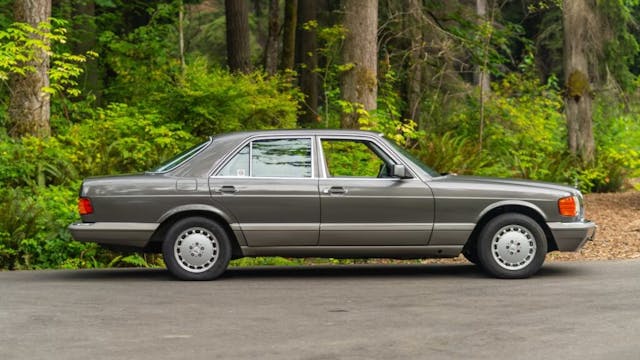
Introduced in the final months of 1979, the second-generation S-class Mercedes is the ultimate expression of the reputation for fit, finish, and reliability that we associate with Mercedes-Benzes from this era. Fitted with everything from a Diesel in the American market to a reasonably powerful V-8 for the time, there are plenty of options and price points to choose from as well.


This platform has long been revered and coveted by enthusiasts, but their values stayed reasonably low until 2020, when wider acceptance and popularity caused them to really take off. This was helped by an abundance of excellent, low-ish mile cars hitting the market and commanding prices that defied logic for a car that was previously merely a solid used car.
What goes up usually comes back down, and while the W126 market is incredibly nuanced—each engine option requires a close look—the general trend is that prices are settling back down. This is especially true with the six-cylinder models. While the V-8 cars are still doing well, the direction is clear: These cars are finding a different footing. The market growth of collector Mercedes from the ’80s hasn’t fully matured, so it only makes sense that some cars will be searching for a new equilibrium as the overall market changes.
1983-1990 Alfa Romeo Spider: -14%
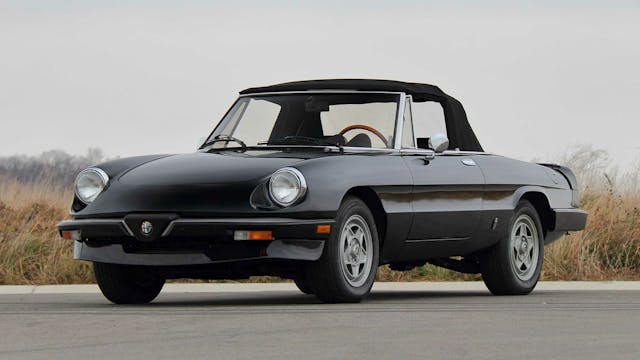
Not as widely coveted as other Italian models but nonetheless important, the Alfa Romeo Spider is Italy’s contribution to the small, sports roadster segment. Produced from 1966 through to 1993, the little Alfa drop top outlasted just about all of its competition, most of which was from the U.K. With the introduction of the third-generation Spider, Alfa Romeo would update the platform for the first time in over a decade with refreshed styling and a change from mechanical to electronic fuel injection.
These cars have remained an affordable entry into Italian motoring, with even the best examples remaining under the $30,000 mark. The problem, though, is ensuring that you find a good specimen. This isn’t necessarily an Alfa problem—it’s a cheap car problem. Vehicles that have remained cheap for a long time are often neglected, as the cost to restore usually exceeds the cost of just buying a good car. Because of factors like this, we’ve witnessed a divergence between excellent examples, which saw minimal movement and fair and driver-grade cars experiencing more of a dip. This is usually a case of buyers getting pickier. This, too, isn’t necessarily an Alfa-specific problem—it’s something that we’ve observed across the market, even if it appears more pronounced in this example.
1995-2001 Acura and Honda Integra Type-R: -13%
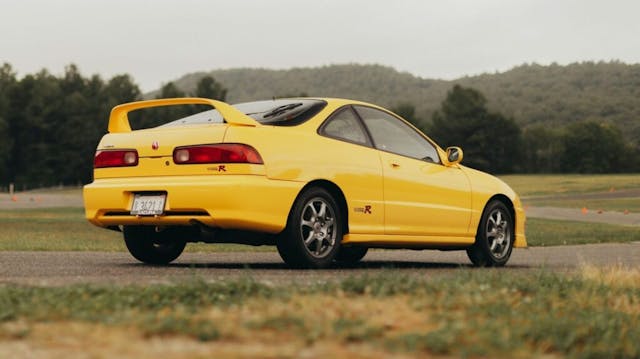
In the late ’90s, the Integra Type-R (ITR) set the bar for what a hot, front-wheel drive, sport compact should be, and boy did Honda set it high. It’s the purest form of a front-wheel drive Honda offering Excellent handling, precise controls, and an engine that effortlessly revs to the moon. To this day, enthusiasts who have experienced one are adamant that the ITR is the best FWD car built.
These cars started to catch on about eight years ago within the enthusiast community as solid collector cars. As Japanese cars, led by the Toyota Supra, Nissan Skyline GT-R, and Acura NSX have gained wider acceptance as desirable collectors, prices skyrocketed for the ITR as well, though not quite as high as the others. Perfect, no-mile examples have commanded prices nearing and topping six-figures, with one even hitting $150K. Japanese-market Honda ITRs influenced the market slightly, increasing inventory as they started to trickle in when they turned 25 years old. However, they have become only marginally cheaper than the US-market Acuras.

A quieting market extends to more than the ITR—other segment standouts like the Mk IV Supra and FD-series RX-7 have shown some tells of the market adjusting downwards as well. None, however, have receded as much as the ITR: Its data was less ambiguous that there has been indeed a softening. With one of the original leaders of the surge in Japanese popularity showing weakness, it’s prudent to fix our eyes on the bigger picture. If you have been previously priced out of your dream Japanese car, they may be coming back within reach. Just don’t expect to see prices from 10 years ago.
***
Check out the Hagerty Media homepage so you don’t miss a single story, or better yet, bookmark it. To get our best stories delivered right to your inbox, subscribe to our newsletters.



Again so few of these cars go to auction that it is hard to say the real value can be down. Depending on the options and the condition the price difference can be affected.
We are not basing this on F150 numbers.
Even the Hondas are not in auction that often. Many are sold privately unreported for a wide range of prices and if it is low mile one will bring big money.
The price of an L88 is not going to effect a 327 car as they are two entirely different beast. The people who buy both are not even the same buyers.
This statement above is like saying the decline of price on on L88 would even effect my C5? Not even close.
Unicorn’s like this and the high wing Mopar have their own place in the market. If they have the right numbers, parts and condition they are to their own type but not to the regular cars that are easily had.
Same if a 67 327 Vette sells for more than average it does not change the value paid for a L88.
I see games all the time trying to drive up or down car values on the web. People promoted the 90’s ZR1 as it has been a dog price wise but the prices did not move. Same on the 928. On a rare occasion someone over pays but the next sale is about the same.
High value cars happen and are not created. Once there they generally stay there. Now if we hit a depression or strong recession where food is even hard to buy cars become valueless. We saw that in the great depression.
Good morning Hyperv6, Author of this article and Editor of Hagerty’s Price Guide here. First of all, thank you for being up early, reading the article and offering some feedback. A lot of what you point out is addressed in the article, but I’ll offer a quick response here.
When we put together the Hagerty Price Guide each quarter, we take options and condition into account. In fact, we actually attend many auctions each quarter to evaluate car conditions in person.
Another point to consider is that auctions, being a small part of the overall market, are just one part of our analysis. Hagerty’s insurance business gives us a unique perspective of the private market, which we believe gives us our price guide a more well rounded view of the big picture.
If you have questions about how we update our prices, I highly encourage you to read this piece I wrote, which explains how we review and update our price guide. It addresses some of your points in depth.
https://www.hagerty.com/media/market-trends/hagerty-insider/how-the-hagerty-price-guide-is-made/
I hear your views on reporting on the top of the market, however the top of the market as well as the bottom and what happens within them do not exist within a vacuum. This is something that is also mentioned within the article, so while most enthusiasts cannot afford the two high dollar cars mentioned, it often does have trickle-down effects to the rest of the market.
Thanks for the reply. The tracking of private sales via insurance is a help.
But I still do not buy into the trickle down of a Blue Chip car one of 20 having influence on a lesser models that was made in greater numbers.
At the end of the say it is supply and demand. If there are greater numbers for sale lesser the value if demand is not eating it up. Also the quality of the car when built in greater numbers matter much. Same with a few special options that may not be as great as an L88.
Also the market always is up and down for a number of reasons but we have yet to see it crash,. We car collectors may not always make money on our cars but seldom do we lose much unless we do some very unwise things or make a bad purchase upfront.
Just have to agree on not agreeing.
Supply and demand only applies to things that are in demand. No one needs vintage cars. These are luxury purchases and therefore inherently not in “demand.” Just because a bunch are for sale does not mean the prices have to drop. Both buyers and sellers can hold off on action simply because it is often not required. Sure, sometimes a person HAS TO sell, but let’s not act like that is 100% of the time.
That makes no sense. Demand = Sales. Just because you do not “need” something does not mean that there is no demand. People do not need ice cream but there is a demand for it. The literal title in supply chain for projecting sales (no matter what it is) is a “Demand Planner”.
Spot on. Hagerty does not and can not monitor the actual selling prices of private transactions. I have been offered countless times TWICE+ the value of my 68 Cougar of the Hagerty “range”. Hagerty would have no way of knowing if – heaven forbid – I sold the car privately for 75k, 150k or 200k to a private seller who really wants the car and is willing to pay what could be according to Hagerty, an outrageous price.
That is not entirely true. I have sold several collector motorcycles that were insured by Hagerty. Each time when I canceled the insurance, they asked me if I would share the selling price. I don’t know if the person was curious, or if Hagerty is trying to keep track of private sales.
Right. They are looking for averages here. The sale of your car at above avg. price would drive up the average, but slowly.
When.all vehicles are designed, developed, and built according to one set of criteria our discussions will continue to be subjective instead of objective. Automobiles have too many variables to allow objective comparisons. The complexity of the beast makes valid comparisons unlikely. This subject is wide open for interpretations. Identify, if you can, the “best” car to collect. By whose opinion is that title applied? We do not want to be caught by verbige to tie our hads with descriptions. This is just one feature of collecting cars we simply have to have. An owner’s opinion is supreme, until you ask his neighbor. This subjectivity is what we chase with each vehicle. As evidence of this I offer the following question: What hot rod attracts the most beautiful women? Yugo is not an option to that question. My car is better than your car!
first post says “posting too fast” ??????????????
Let me know when you find out what that means. I gave up on posting.
Posting too fast — on the first post for days? Haggerty has a digital glitch in there somewhere, huh?!
the true value of the car is the price that someone is willing to pay you right now .. on a given day and time .. price guides are not bibles ,,, they are are general reflection of the market place
I agree! How many L88’s sold in the last quarter? Probably just one and we have no idea what the condition was. Hagerty post this without facts and the other L88 owners suffer because people think prices are down. I see this almost every time Hagerty post these articles. “71 Cuda Hemi Convertable Prices Are Up”. Really, there are only a few left so of course they are up”
The article mentions three…
Lots of uninformed buyers and sellers on the low end of the market don’t (can’t?) differentiate cars such as the L88 from their more plebeian brethren. They just hear “$1M Corvette” and their eyes turn to dollar signs. If the rising tide lifts all boats, so goes the waning tide.
It makes no sense, but it seems little in this “hobby” does.
I believe that you are correct, sir. I bought a C4 first gen Vette ZR1 for lunch money. I’ve put a bunch of money into it, but the market tells me it’s best to keep it rather than sell. Which is fine, it bookends well with my 40th Anniversary Pontiac/Holden GTO, both red with black interiors. I’m quite happy to keep an odd and very entertaining driver, so the market “value” doesn’t really affect me; if it becomes a million dollar car, take back everything I wrote!🤣
Just in case there are any ’67 L88 ‘Vette owners out there who are panicking about the loss in value of your vehicle and want to get out quickly before it bottoms out, I have $728.63 in my Mad Money Jar. Ready cash. Just let me know when to come pick up the car! 😁
Found a nickel in the couch – now up to $728.68!
The writer of his article is right that, theoretically, market segments do not exist in a vacuum, but I don’t believe that an analysis of the sale prices of C2 L-88 cars will have any real-world impact on “regular” Corvettes. He may insist that it does, but it does not.
I have to mention that I’ve read a lot of Hagerty articles, and I perceive a tendency to lowball prices while presenting an image of “friend of the enthusiast” – I really think there is an inherent conflict of interest when an insurance company publishes articles about car values. Hagerty should simply stop doing this, they should publish articles of technical or collector interest etc, but not about car values per se; it’s just common sense.
The fact is that if you don’t like the articles or disagree with the writer you really don’t have to read them. Do you really believe that Hagerty is attempting to control the market by publishing these articles ?? 🙂
Dan, thank you for your response.
With respect to your first comment, we do need to read an article in order to determine if we agree or not. I would, however, concede that I should no longer be surprised at the content.
With respect to your question, I do believe that there is a conflict of interest whenever any insurance company publishes articles purporting to be unbiased opinions about the very things that they are insuring (even if they were correct). It would be an overstatement to say that Hagerty is attempting to control the market but obviously downward pressure is better for any insurer.
“With respect to your first comment, we do need to read an article in order to determine if we agree or not. I would, however, concede that I should no longer be surprised at the content.”
Regardless of any other opinions expressed above, I feel like that statement is not a wise approach to any argument or just life in general. In order to have an informed opinion on anything, wouldn’t it be prudent to figure out what the statement/argument is?
Joe King, I agree with your sentiment so I believe you mis-read the paragraph you quoted (you appear to have imagined the word “not” in the first line).
Cheers.
Top of the line cars are even recognized by manufactures to sell lessor cars. In fact a great many people will buy what looks like the decked out top of the line model sports model with the weakest powertrain available, Because, wait for it, it looks like the hot one. Others may even buy a totally unrelated type vehicle as they associate the brand with that special model. Many will be influenced in the collectors car market to purchase one that to most appears like that top of the line car just because it looks like that top model to all but the car people that are into that kind of cars. A drop or increase in value of that special model will always influence the cost of the cheaper lookalikes.
“He may insist that it does, but it does not.”
Prices of 427 and 327 C2s have dropped the last few months
Dave, thanks for weighing-in.
Your statement is interesting. If C2s in general are losing ground I think that would have been a more compelling point than the specific L-88 example they used.
Causation, Correlation, or Coincidence
Since the IRS is standing at every auction house stage waiting to write down the buyer’s and seller’s names,
auction price results are not the best indicator of recent sale prices (and don’t bother adding in the buyer’s premium cost).
The true big dollar sales are being handled privately. You need to find a way to track those sales. Forget auctions.
Rhetorically standing there, maybe, but literally, probably not. I am sure there are easier ways to gather that information than posting a bored agent at the end of a stage furiously taking down information, especially at a big event like Barrett-Jackson! Remember, most states collect taxes upon registration and capital gains comes on the sale if there is a profit. But I think you’re right, if you wanna dodge the tax man, you’re probably better off doing a private deal.
Best of luck!
I have said it before, will say it again and hope I do not insult the other collectors. I have about twenty or so cars in my “garage” (most of them British), they were all obtained over time because I truly love the way they look and drive. I do not care all that much about judged car shows ( I prefer cars and coffee and sharing stories with people, etc.) Buy what you love, and don’t pay too much attention to what your car is worth today or last week. Over time inflation raises prices on all things. If you are into cars only as an investment, then you will experience highs and lows and the whims of other investors. But if you love the car you have, keep it and let your heirs worry about the value. My kids will not care what I paid for it, only what it is worth when (or if) they sell it.
I’m with you.This has and will be my stance until I’m gone. I buy what I like and can afford and take care of it. I am a car guy, not a money guy or someone who cars what it’s worth two years or twenty years from now.
When I was a kid I fell in love with cars and not money. The love affair is still strong, money is simply a means.
So true Waldo. I graduated High School in 1967. A friend whose parents were rich bought a fellow graduate a brand new ‘67 Yellow Vette 4 speed. I coveted this car for years but never bought one, even when I could. In my early 50’s the C5 model appears and I decided it was time to find that allusive 1967 Vette. I drove it and though it was beautiful I was underwhelmed with the ride and handling. I still love to look at it. Then I drove a C5 that I thought was the prettiest since the ‘67. It had the eye candy look of the ‘67 with the ride I had expected from the ‘67. I bought a base convertible and a Z6 just to look at. I hardly ever drive either, many both a total of 400 miles a year, but sure enjoy visiting them in my man cave with a cup of coffee or a cold beer. I do not care if they are only worth $1,000 each, I won’t sell them and they have tremendous value to me.
Yess! This!
Couldn’t agree more. I take my [first new car… a] ’69 Lemans Sprint to shows and don’t have it judged. LOTs of good conversations!! I’ve been known to go out to the garage, open the door, look in, thinking DAMN,
I really do still have it!… close the door and go back into the house smiling like a damned fool…. appears I’m not the only one with those kinds of thoughts.
Terry is spot on in his comment. At the tender age of 13 in 1966 I had the privilege of riding in a brand new Corvette. Although I’ve owned a couple of C3’s over the years it wasn’t until retirement that I finally realized my boyhood dream of owning a 1966 C2 convertible. I’ve had it now for a couple of years and every time I go for a cruise it provides an exciting driving experience that never seems to get old. When I see it in the garage I almost need to pinch myself to make sure it’s real. I have been fortunate to own other classic cars over the years but this ’66 Vette is extra special to me and my intent is for it to eventually pass into my estate. The monetary value is largely irrelevant to me and something for my heirs to deal with. I can’t place a dollar value on the uniquely enjoyable driving experiences, pleasant memories, and everything else that makes up my dream come true.
Bob, oh gosh, thank you for your story. Mine is *similar,* but not exact. I was 8 or 9. We were taking a shortcut between two neighboring shopping plazas when we passed a brand new, black, ‘63 Split-Window coupe behind the Pizitz. I shocked Mom when I practically yelled, “Slow down,” so I could look at it. I was smitten, and Corvettes—especially C2s and even more especially ‘63 coupes—have been my absolute favorite car ever since. Sadly, I’ve never owned one. I guess I picked a less-than-lucrative career field. But I hope to draw some money out of my Roth and a 401K before I croak and finally buy the C2 of my dreams.
Saying something is down 24% or some other number is nice but the starting/ending numbers used to account for this would have been helpful. Otherwise all I can do is say OK and move on.
The writer of this article is right that, theoretically, market segments do not exist in a vacuum, but I don’t believe that the sale prices of C2 L-88 cars have any real-world impact on “regular” Corvettes. He may insist that it does, but it does not.
I have to mention that I’ve read a lot of Hagerty articles, and I perceive a tendency to lowball prices while presenting an image of “friend of the enthusiast” – I really think there is an inherent conflict of interest when an insurance company publishes articles about car values. Hagerty should simply stop doing this, they should publish articles of technical or colllector interest etc, but not about car values per se; it’s just common sense.
Your kidding…..right?
Mik, it seems my post appears twice. Please see four posts above if you are actually interested in some discussion. If you’re just a troll, carry on.
PS – it’s “you’re” not “your”.
I like this article. That being said I am constantly watching Marketplace and see cars ( 1969 Camaro ) going for far less than what my car is insured for. My car though is not an investment it is enjoyed. Thanks to hyperv6 and DUB6 for your constant input.
It would be helpful if the selling prices, high or low or median, were provided in addition to the percentage change. The percentage change by itself doesn’t provide context for a non expert like me.
I’m a 76 year old collector . Keep in mind that the Baby Boomers are thinning out. Less buyers less money. Look what happened to the Model A’s and T’s ???
So very true Vin! So very true!
This. Spot on. The younger crowd have no emotional connection to the L88 Corvette and prices WILL drop in the coming years. Supply and demand indeed.
The 67 L88 is just one example.
Glenn,
Today’s classics, tomorrow’s museum pieces.
I thought the idea of owning a classic car /muscle car , whatever , was to ENJOY it, drive it , be happy in the memories it gives you back ? IF it goes up in value , great . If it goes down in value so what …you had that many years of enjoyment with it . IF you bought it to make money & profit ……..well , we all can’t all be Wayne Carini’s in this car market …even he stumbles once in awhile .
I agree Randy. When I was 18 I bought a brand new 69 Chevelle SS396. As we almost all did sold it and moved on . I have had 427 Vettes ,Trans Ams and many more similar vehicles. Always liked the Chevelle the best. When I retired in 2010 found an almost complete SS396. Finished it and every time I drive it you can’t pry the smile off my face. You have to keep up on the values for insurance reasons but other than that not concerned . The memories my wife and I have are more valuable to us than “Whats it worth?”
The nano sparkle add on your email is a scam. The price quoted is not the price shown in the final receipt. You don’t know that until you have already paid. If you paid with PayPal you are unable to cancel with PayPal or the nano sparkle company. You should eliminate this add from your site.
I have to agree with Vin K, the people that got their first kiss in a Model A are pretty much gone. Sure there are some hoarding their prized “A” in the back shed uncaring and maybe unknowing the true value, just holding onto their memories. I personally like what the hot rodders are doing (not rat rods) in a way restoring the old stuff better than new sorta. Then we have Gen X and that will throw everything in the dirty clothes bin in favor of front wheel drive and a turbo YIKES! Having said that, I respect the old geezers for holding on to their A’s.
It’s especially important when the A passes to the second or third generation, I have my Godfather’s A, a friend has his grandfathers A and we plan to have them both their for my Son’s wedding next year because he wants us to and his bride likes the idea. I think that tells me it isn’t an investment but an heirloom that can bring a smile or a tear and that’s the priceless value of nostalgia, the smiles and looks from all the passers by is just an added bit of icing to what makes you feel good so keep the wheels turning and enjoy your weekend.
One of my neighbors won a right hand drive Integra type R from a Youtube contest. I couldn’t believe it when I saw him driving it. That car was so clean, had super low mileage and was all original. I saw him out walking his dogs the other day and mentioned that I hadn’t seen the Type R in a while but I did notice that he’s got a brand new Tundra AND a brand new Bmw Supra. He wouldn’t tell me how much he sold it for but the fact that he has 2 brand new Toyota’s leads me to believe he got a pretty penny for his Type R.
Regarding Model As and Model Ts, the fact that they’re almost unusable in today’s traffic also has an effect on values. But the L88 market is so thin, and subject to specifications and history of each individual car. Those factors have more impact on L88 pricing than any one sale would suggest IMHO.
Leonardo da Vinci’s “Salvator Mundi” sold at auction for $450.3 million in 2017.
I don’t believe the value of my art collection was affected much by that event.
The “Pink Star” diamond is the most expensive diamond ever sold at auction fetched $71 million. I don’t believe that my wife’s engagement ring was affected by that event either.
There are only three 1967 numbers matching L88 Corvettes in existence today. Everyone reading this wants one. I believe the most expensive fetched $3.8 million at auction in 2014.
Did that event lift the value of my 1967 L71 coupe, wherever it may be today? I doubt it.
There are very few examples of products that are exempt from the supply & demand curve. (see Veblen and Giffen products) So, I’m assuming that my collection of signed lithographs, my wife’s ring, and my old L71 are on different curves then my examples above.